Fillrate/shading performance
Let's take a look at the cards' basic vital statistics.| Card | PowerColor GameFX X800 GT | SAPPHIRE X800 GT Hybrid | Galaxy GeForce 6600 GT | ATI Radeon X700 Pro | Manufacturing process | 130nm | 130nm | 110nm | 110nm | Interface/speed | PCI-Express | PCI-Express | PCI-Express | PCI-Express | Core speed | 475MHz | 475MHz | 525MHz | 425MHz | Rendering pipelines | 8 | 8 | 8 | 8 | Fillrate (multi-texturing) | 3.8GTexels/s | 3.8GTexels/s | 4.2GTexels/s | 3.4GTexels/s | Onboard memory | 256MB | 256MB | 128MB | 256MB | Memory interface | 256-bit | 256-bit | 128-bit | 128-bit | Memory speed | 980MHz | 980MHz | 1050MHz | 865MHz | Memory bandwidth (max) | 31.36GB/s | 31.36GB/s | 16.8GB/s | 13.84GB/s | Vertex shaders | 6 | 6 | 3 | 6 | Shader Model | 2.0b | 2.0b | 3.0 | 2.0b | Cheapest online price | £110 | £110 | £105 | £95 | Notable features | Twin DVI-I, R480 core | Variable-speed fan | SLI compatibility | VIVO (on some models) |
It's of abosolutely no surprise that PowerColor's Game FX X800 GT 256MB card matches the basic specs. of SAPPHIRE's, so let's see if shading and fillrate theory translates well to 3DMark05's feature test performance.
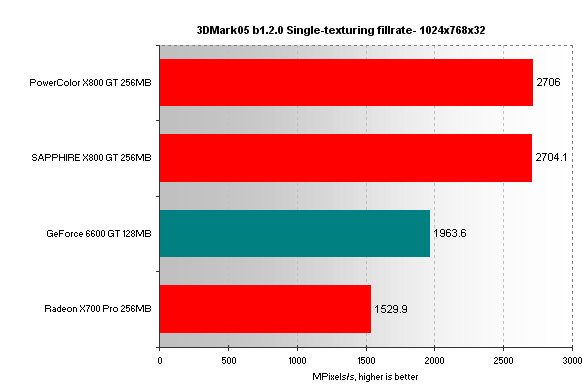
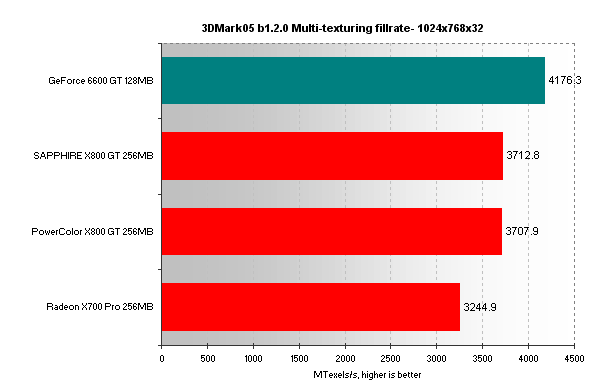
As one would expect, fillrate performance is very similar to SAPHHIRE's. Multi-texturing performance, however, is still some way off a GeForce 6600 GT's.
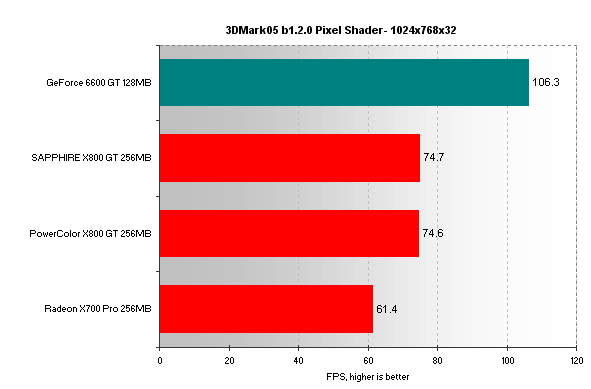
Pixel shading performance is also some way off NVIDIA's star's
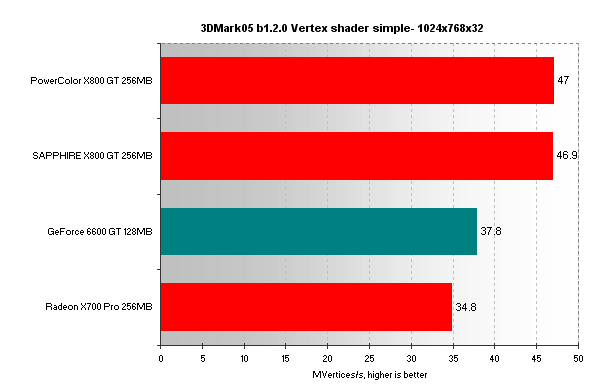
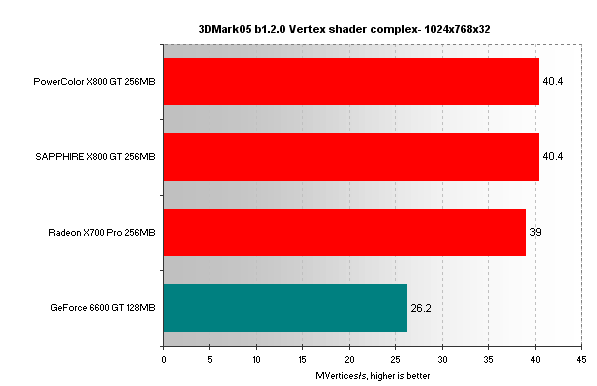
Vertex shading is where ATI hits back.









